Google's Personalized Search Explained


As Google's search results grow increasingly personalized, SEO experts are growing increasingly indignant. Tracking ranking at Google accurately — one of the main SEO KPIs — has become a challenge as location, previous searches, and browser history now affect the results that users get. The concept of accuracy itself has become somewhat vague: if there are as many SERP variations as there are locations, which one should you consider "accurate"?
Even worse: with so many search customization factors involved, you may not be aware that your ranking data is skewed, influenced by some kind of personalization algorithm you didn't take into account. Could you be making the wrong decisions based on the wrong data?
In this post, I'll look at the different ways Google personalizes search results, their impact on SEO, and tips to ensure that personalization doesn't falsify your ranking data. But before we roll, let's figure out what exactly personalized search is.
What's personalized search?
Personalized search results are the results a user sees in a search engine that aren't just based on the traditional ranking factors (such as the relevance of the web pages to the search term or their authority), but also on the information that the search engine has about the user at the given time, such as their location, search history, demographics, or interests. Although widely debated, the purpose of personalized search is to increase the relevance of the results for the particular user.
Both Google and Bing (and hence Yahoo, too) are personalizing their search results, but Google seems to be doing it for a larger share of searches. Back in 2011, a small experiment showed that over 50% of Google results were personalize search — with that number having likely gone up since.
What are the factors that affect personalization?
1. Location
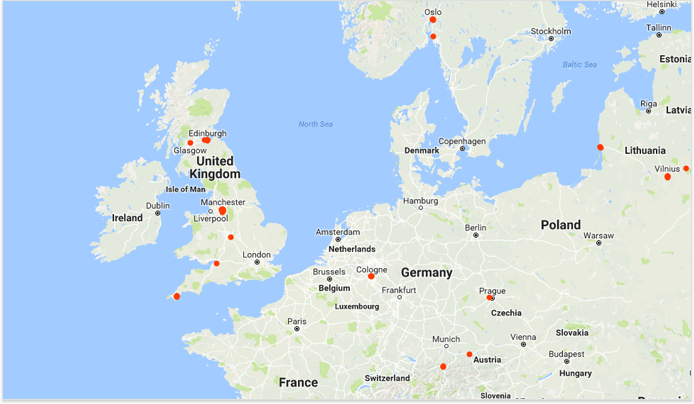
The red dots are places Google knows I've visited over the past few months.
It shouldn't come as a surprise that Google knows the searcher's location and uses it in a big part of the searches we make. What may be more surprising is the preciseness and diligence that Google tracks this with. If you have location tracking turned on your mobile device, go on and prepare to be surprised.
If you are not connected to Google via a mobile device, it will figure out where you are from your IP address. This may not be as precise, but it'll still give Google grounds to tailor search results to your location.
HOW IT WORKS: Physical businesses and places closest to the searcher are displayed in the local pack and higher up in the organic results.
For the most part, location data affects searches that imply that the user is looking for a physical place—thus a major factor for local businesses. Searchers within the same city, standing just a few miles away from each other, will often see different results for the same search term, especially in the local pack.
THE PROBLEM FOR SEO: As SERPs differ for searchers depending on their location, accurate rank tracking becomes a challenge. How do assess results with crucial limited personalization?
With location changing the SERPs so much, rank tracking doesn't get any less useful — but it does get harder.
THE SOLUTION: The first step for understanding these Google personalized results, is to set your target locations and use your rank checking tool to track rankings in each one separately.
If you have a local business with a physical address, you've got to identify your target locations and start tracking each of them. In Rank Tracker, you can create as many custom locations as you want to track rankings for. Here's how you can do that.
1) If you don't have the tool installed yet, download Rank Tracker's free version and install it on your computer.
2) Fire up the tool and create a project for your site, specifying your target keywords (or, open an existing one).
3) Go to Preferences > Preferred Search Engines and click the Add Custom link next to Google (if you're outside the US, make sure to select your country's version of Google: e.g., Google.co.uk for the UK and Google.de for Germany).
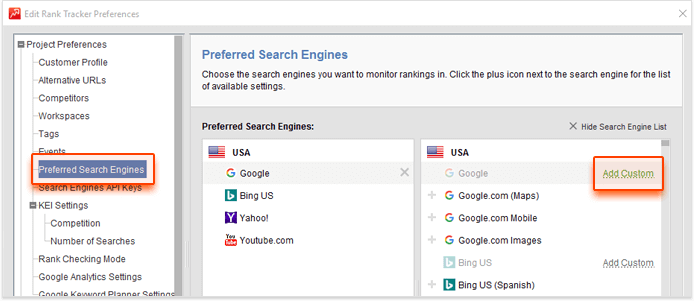
4) In the Advanced Settings window that pops up, locate the Preferred Location field and enter the name of the city, district, or exact street address of your target location, and click Apply. You'll then see the map adjusted to show the location you've specified.

5) Give your localized version of Google a short name, and click OK.
6) Switch back to your Rank Tracker workspace and right-click on the name of any column to enter the workspace editing mode. Add the newly created search engine to your active columns, and go on and check your rankings.
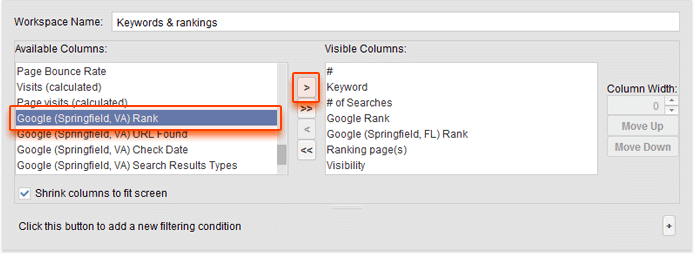
Feel free to repeat the process for as many locations as you need.
2. Search and browsing history

Oh snap.
Your previous searches, the search results you clicked on, and your browser history affect how Google will personalize search results for you in the future. These details let Google understand what your interests are and tailor your search experience to them.
HOW IT WORKS: Google creates a personalized profile for every searcher based on their browsing history, search history, and SERP clicks, and subsequently alters the search results we see based on our interests.
Let me illustrate how search customization works. In a clean browser, I did a search for "kafka" and got this:
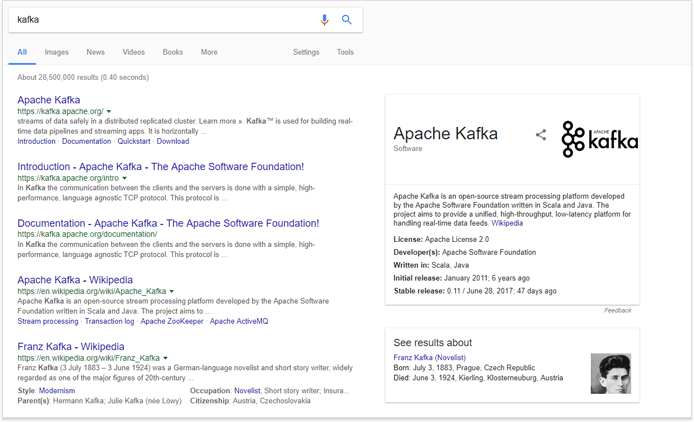
As you see, most of the results I got are about Apache Kafka. Next, I clicked through some of the results that were about Franz Kafka, the novelist, and dwelled on them. After that, I ran a search for "kafka" again:
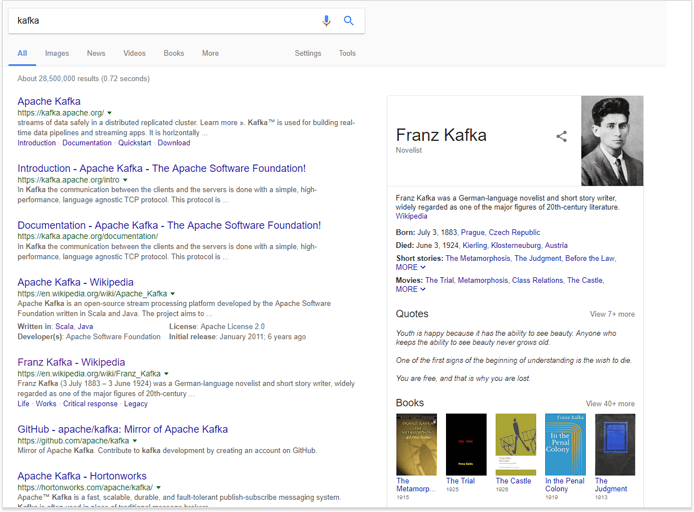
Interestingly, the organic results didn't change much — but the Knowledge Graph panel did. By now, Google's search personalization algorithms have decided that I'm more interested in novelists than data software.
THE PROBLEM FOR SEO: First, it gets trickier to double-check your rankings in a browser. Second, it means that someone who clicked on your competitor's search result in the past will likely see them as a top result in the future (*sigh*), even if your site's rankings improve.
At SEO PowerSuite, we often get contacted by our users who see their website ranking higher up the SERP in their browsers than in Rank Tracker. The reason for that is that you've sure visited your own site more than a few times through your browser; subsequently, Google assumes you like that resource (don't you?) and pushes it higher up the search results in your personalized SERP. Meanwhile, searchers who've never been to your site before will see it ranking much lower than that.
What about the searchers who haven't visited your site but have been to a competitor's? Well, their SERPs will likely get personalized in favor of that competitor. If you think about it, that's not the worst news — after all, that also means that when you get to rank among the top results for your target keywords, people will start clicking on your result, and this personalization will begin to work in your favor.
THE SOLUTION: Learn how to de-personalize SERPs in your browser, and keep fighting for that top position!
Rank Tracker will check your rankings in a de-personalized way by default, so there's no need to change any extra preferences to enable this. But if you're looking to see the unbiased SERP in your browser, all you need to do is make sure you're using your browser's Incognito/Private mode so that your history does not affect the results you get. Mind that your location will still be affecting the SERPs.
Don't forget that history-based personalization doesn't have to work against you — it can (and will) work for you as soon as you rank high enough in the SERPs for people to start clicking on your listing. When someone runs a search for your target keyword for the first time, you've got to do your best to appear among the top results in the unbiased SERP. If you do, and if the searcher clicks on your listing, you're becoming their preferred entity, and their subsequent searches will most likely include your business as the top result.
3. Social media

A graph by Caleb Jones that visualizes his Twitter network.
When you create a Google+ account for example, you give away a lot of demographic data on yourself, such as your age, gender, interests, and friends. This information, along with your search and browser history, form your so-called "personalized profile" that Google uses to adjust the SERPs to your interests.
HOW IT WORKS: Google may add social media posts from your connections to the search results, push results endorsed by your connections higher up the SERP, and subtly tailor the search results you get to your profile.
If you have a G+ profile and are logged in to your Google account in your browser, the search results you see may prominently show content shared by your friends among the page 1 results. Let me give you an example. I just searched for something as I was logged out of my Google account:
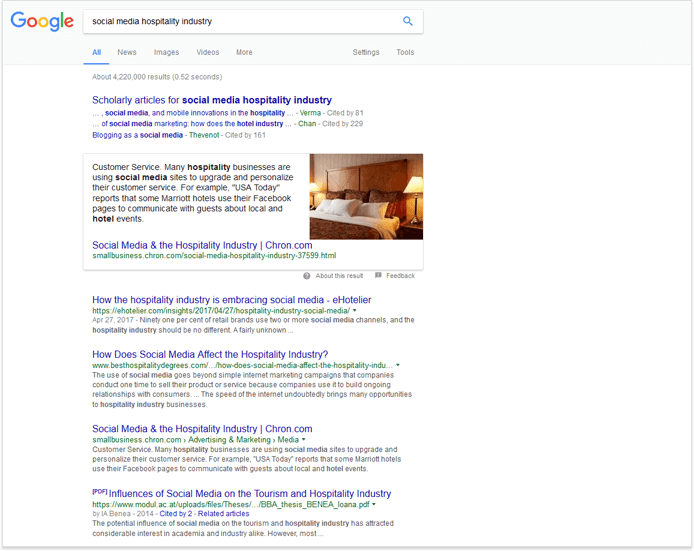
Nothing special, huh? A moment later, I logged back in and here's what I got:
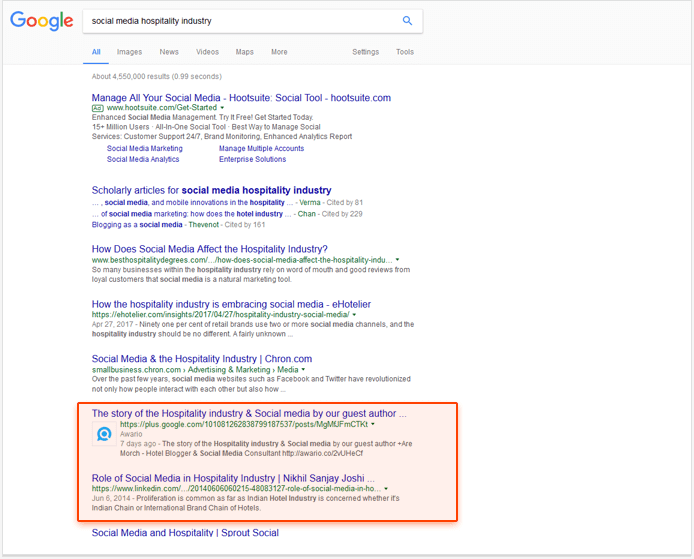
The result from Google+ comes from Awario, one of my connections on the network. Interestingly, Google also shows a LinkedIn post which wasn't there when I was logged out of Google.
THE PROBLEM FOR SEO: Personalized results from social media are pushing down organic results, and it's getting harder to get to the top spots.
Like with most kinds of personalization, the problem here is that results tailored to particular searchers' social media profiles are eating up the SERP space and pushing some of the organic listings down in the search results.
THE SOLUTION: Focus on social media as it may improve your search visibility.
While the social media posts may be shifting your site's rankings down in the personalized SERPs, they also pose a ranking opportunity. If you create quality content that gets shared across the social networks, particularly Google+, and keep your social media efforts up, you have every chance to get more exposure in the SERPs thanks to personalized search.
Remember that: a) people who follow you on Google+ are likely to see your posts among the search results, and b) those who follow anyone who shared the content are also likely to see it. If you can build a big audience and reach influencers in your market, your content will likely continue to scale via personalized search.
4. Device

In 2017, Google's SERPs on desktop and mobile devices have grown so different that it's probably fairer to call Google mobile a distinct search engine in its own right — one with its own set of ranking factors.
HOW IT WORKS: Pages are ranked differently on mobile and desktop devices, and search queries are also interpreted differently.
While authority and relevance signals appear to be largely the same for both Google desktop and Google mobile, one major difference in the algorithm is the importance of mobile friendliness. The Mobile algo update has removed pages not optimized for smartphones from the mobile search results completely (or at least down-ranked them significantly), while pushing mobile-friendly pages higher up in the SERPs.
With over half of Google queries coming from mobile devices, and the mobile-first index on its way, you've got to be optimizing your site for mobile as much, if not more, as you are for desktop.
THE PROBLEM FOR SEO: Google mobile has grown into a search engine in its own right to track and optimize for.
The mobile versions of search engines (particularly Google) have in fact turned into separate search engines that look at different factors to rank pages. That's why you need to be tracking your mobile rankings and your desktop rankings separately.
THE SOLUTION: Track mobile and desktop rankings separately, and keep optimizing for mobile.
Make sure you're tracking your mobile rankings in addition to your desktop positions. With Rank Tracker, you can easily set this up by adding Google (as well as Bing and Yahoo) mobile to your target search engines. To do that, just jump to Preferences > Preferred Search Engines in your Rank Tracker project and hit the + button next to the mobile version of the search engine you're looking to add.
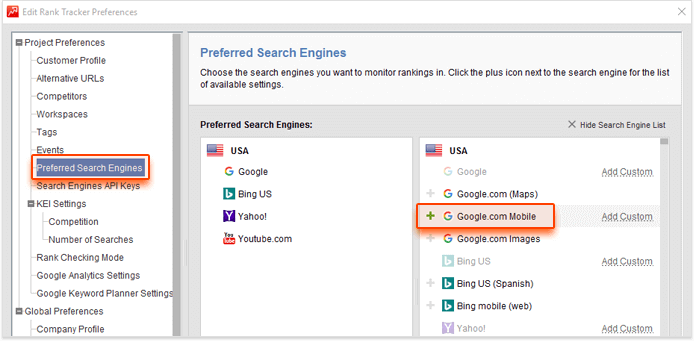
After that, just like you did for your custom rank tracking locations, right-click the name of any column back in your Rank Tracker workspace. Add the mobile search engines to your active columns, and they'll appear in your main rank tracking view right away.
On top of that, remember to keep optimizing your site for mobile devices and speed (you can find a comprehensive guide to mobile SEO here).
5. Other Google products you use

Many of Google's search features (think featured snippets, travel boxes, Knowledge Graph panels) are intended to provide the information the searcher is looking for right on the search results page, so that we don't have to click through to the search results.
One such feature is a unique type of Google personalization. Namely, Google's use of information it has about you from its other products — Gmail, Google Calendar, Google Play, Google Maps, etc. — among the organic search results. This means you can use Google search engine not only to find new information, but also to remind you of some information that's between you and Google, think 'Google Personal Search'.
Ask Google when your flight is, the name of the hotel you're staying, and what not — and it'll happily tell you:
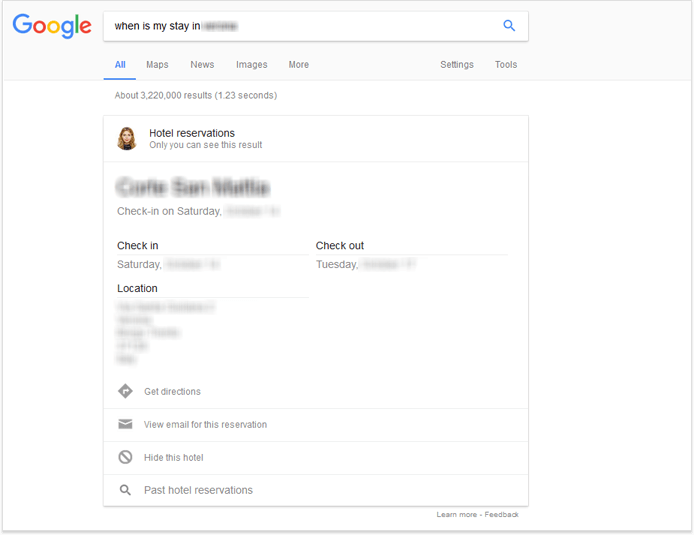
While this likely doesn't impact SEO much (yet), it's an interesting trend towards Google's development into something much bigger than a search engine with a growing emphasis on personal search.
Bottom line
Personalized search means there is no consistent search experience across users, locations, and devices. It's still crucial to track your keywords, but you need to realize that it is not giving you the exact picture every searcher sees. This is why it's important to keep tracking rankings across different locations (particularly if you're doing SEO for a physical business) and devices, and amplify your content marketing efforts and social media presence to win placements in the personalized SERPs.
That was my overview of personalized search, its SEO implications, and tips on increasing the accuracy of your rank tracking in 2017.
What's your experience with personalized search? As always, I'm looking forward to your thoughts and questions in the comments.

By: Masha Maksimava







